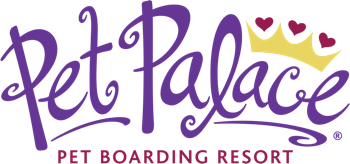The Importance of Dog Enrichment
Posted by Lora Shaw on May 8, 2023

A dog’s natural instinct is to spend their day foraging and hunting for food where there are other animals to chase, grass to roam in, streams to swim in, endless scents to explore, and beyond. Opposite of this, domesticated animals readily have food and water in their bowls and only a certain amount of space to roam in a controlled manner, bucking their natural instincts.
As a dog owner, it is possible to tap into your dog’s natural instincts so they can scratch that itch. However, keeping your dog happy and healthy means more than just going on walks and making sure they eat well. An additional way to enhance the health of your dog is through dog enrichment. Dog enrichment is achieved by encouraging them to engage in their innate behaviors, like playing, chasing, smelling, chewing, and scavenging.
By encouraging these innate behaviors, your dog becomes physically, emotionally, and mentally satisfied. Let’s dive into different types of dog enrichment and ways to enforce it on a daily basis.
Types of Canine Enrichment
There are five different types of dog enrichment that can help your dog reduce stress and lessen boredom. Utilize them to improve the overall quality of life for your furry friend.
1. Social Enrichment
Social enrichment is important for dogs of all ages, especially puppies. The process of socializing your dog exposes them to new people, places, and situations where they can learn and grow. Dogs who are well-socialized have the best chance of being confident, are typically less aggressive, and do not become overstimulated in unfamiliar situations.
Ways to engage your dog socially and further contribute to their canine enrichment include the following:
- Setting up playgroups that are supervised by humans
- Taking daily walks or jogs
- Visiting local breweries, bars, and other establishments that are dog friendly
- Going to the pet shop
- Taking a trip to the park or beach
However, the list doesn’t stop here. This form of dog enrichment includes any activity that exposes your dog to other dogs, individuals, or groups in different environments than their familiar ones.
2. Nutritional Enrichment
Next in the lineup, we have nutritional enrichment which encourages your dog to use its natural scavenging instructs to hunt for rewards, typically a treat or small snack. A popular way to do this is through puzzle toys or mats, which combine treats with physical and mental stimulation. This will reduce your pet’s boredom and keep them occupied for a period of time.
Try the following dog enrichment activities to promote nutrition and health in your pup:
- Give them some dog puzzles
- Let them play with snuffle mats
- Hide snacks or treats in a room of your house
- Sprinkle kibble in a rolled-up towel, making your dog work for their snack
- Grab a muffin tin, add treats to some of the cups, and cover each cup with a tennis ball
- Purchase dog toys that can be stuffed with snacks or toys that dispense treats
- Serve dog food out of a slow feeder at mealtime
3. Occupational Enrichment
Using occupational enrichment helps your dog to stay out of trouble while allowing them to release excess energy. This keeps them mentally stimulated and gives them a fun activity to do. You can try:
- Sports and agility activities, like obstacle courses that include jumps and tunnels – these activities can also help prevent obesity and increase endurance
- Puzzle toys that make them work for food, which range in difficulty levels
- Dog training, either at a professional facility or on your own
- Playing fetch to release extra energy and have some bonding time with your pet
4. Sensory Enrichment
The senses of sight, sound, touch, and especially smell are major parts of your pup’s life. Stimulating your dog’s senses can greatly reduce their anxiety, making them happier and healthier.
Below are some dog enrichment activities that you can engage in to encourage your pet to fully use its senses:
- Give them spots to look out of the window to see people, animals, and everything else outside
- Play music of all genres at a reasonable volume, ranging from easy listening to rock, since the different moods can get them attuned to different activities you have planned
- Play scent games with dog treats
- Try hide and seek to get them active and utilizing their hunting instincts
- Incorporate different textures into your routine, using new massaging brushes and blankets made from varied materials
- Supervise them while they use chew toys
- Introduce them to new scents by adding the scent to a cloth and allowing them to sniff it
5. Physical Enrichment
The final form of canine enrichment is the easiest one to practice, as it involves getting active and playing with your pup! Whether your dog likes to fetch, play tug of war, or simply run around, there are so many ways to practice physical enrichment. The best way to do this is to combine mental exercise with physical exercise, which provides a positive way to reduce stress or any built-up energy from the day.
But remember, physical enrichment can also mean rest. This could include cuddling up with your dog while you watch a movie or allowing them to nap after a long day of play while you give them a belly rub.
Benefits of Dog Enrichment
Dogs do need to learn to cope with boredom and solitude, especially since entertaining them 24/7 simply isn’t feasible for any pet owner. However, providing your pet with adequate enrichment can improve their quality of life.
Additionally, proper enrichment reduces the chances that they will participate in stressful behaviors, including the following:
- Excessive licking or chewing of their feet, tail, or other body parts
- Lots of barking or other forms of vocalization
- Attempts to manipulate closure barriers, like trying to escape from your yard
- Deliberate self-mutilation
Factors to Consider When Practicing Dog Enrichment Activities
Most dogs should have at least 20 minutes of active stimulation each day, on top of 1-2 walks. However, higher-energy dogs and breeds may require more than this and elderly dogs will definitely not need as much. Therefore, it is beneficial to experiment and find the appropriate amount of dog enrichment activities that should be practiced with your pup.
Beyond age, here are some other characteristics to consider when engaging in dog enrichment:
- Dog breed – Since dog breeds all have specific skills, satisfying their natural inclinations will provide them with the greatest satisfaction.
- Health – If your dog is injured or has other issues that will prevent them from partaking in a specific type of enrichment, be sure to avoid that activity. If you are unsure, you can always ask your veterinarian to prevent further problems.
- Personality – A dog’s personality is one of the biggest factors in its enrichment experience. If your dog gets bored walking, try playing fetch! If they don’t get along with large groups of dogs, try introducing them to just one furry friend at a time! Dog enrichment is all about experimenting and finding what works for your pup’s unique needs.
Start Planning Dog Enrichment Activities for Your Pup Today!
By providing your dog with different types of simulation, you can help curb unwanted behavior while increasing their happiness and wellness. Remember that balance is key and that engaging in a variety of activities will help achieve the best outcomes!
Also, if you’re worried that your pup isn’t getting enough enrichment at home, be sure to take them to your nearest Pet Palace. From interactions with other dogs to plenty of outdoor time, we can provide dog enrichment activities that you might not have time for.
Contact us today. We look forward to seeing you and your furry friend!
Additional Resources to Check Out
13 Reasons Why Playtime Is So Important for Dogs
The Benefits of Socializing Your Dog

Categories: All Posts, Dogs, Tips for Your Pets
Archives
Recent Articles
Categories
Monthly Archive
- July 2025
- June 2025
- May 2025
- April 2025
- March 2025
- February 2025
- January 2025
- December 2024
- November 2024
- October 2024
- September 2024
- August 2024
- July 2024
- June 2024
- May 2024
- April 2024
- March 2024
- February 2024
- January 2024
- December 2023
- November 2023
- October 2023
- August 2023
- July 2023
- June 2023
- May 2023
- April 2023
- March 2023
- February 2023
- January 2023
- December 2022
- November 2022
- October 2022
- August 2022
- July 2022
- June 2022
- April 2022
- March 2022
- February 2022
- November 2021
- October 2021
- November 2020
- September 2020
- July 2020
- March 2020
- January 2020
- November 2019
- September 2019
- July 2019
- March 2019
- January 2019
- December 2018
- November 2018
- October 2018
- August 2018
- July 2018
- June 2018
- May 2018
- April 2018
- March 2018
- February 2018
- January 2018
- December 2017
- November 2017
- October 2017
- September 2017
- August 2017
- July 2017
- June 2017
- May 2017
- April 2017
- March 2017
- February 2017
- January 2017
- December 2016
- November 2016
- September 2016
- August 2016
- July 2016
- June 2016
- May 2016
- April 2016
- March 2016
- February 2016
- December 2015
- November 2015
- October 2015
- September 2015
- August 2015
- July 2015
- May 2015
- March 2015
- February 2015
- January 2015
- December 2014
- November 2014
- September 2014
- August 2014
- July 2014
- June 2014
- May 2014
- March 2014
- February 2014
- January 2014
- December 2013
- November 2013
- October 2013
- September 2013
- August 2013
- June 2013
- May 2013
- March 2013
